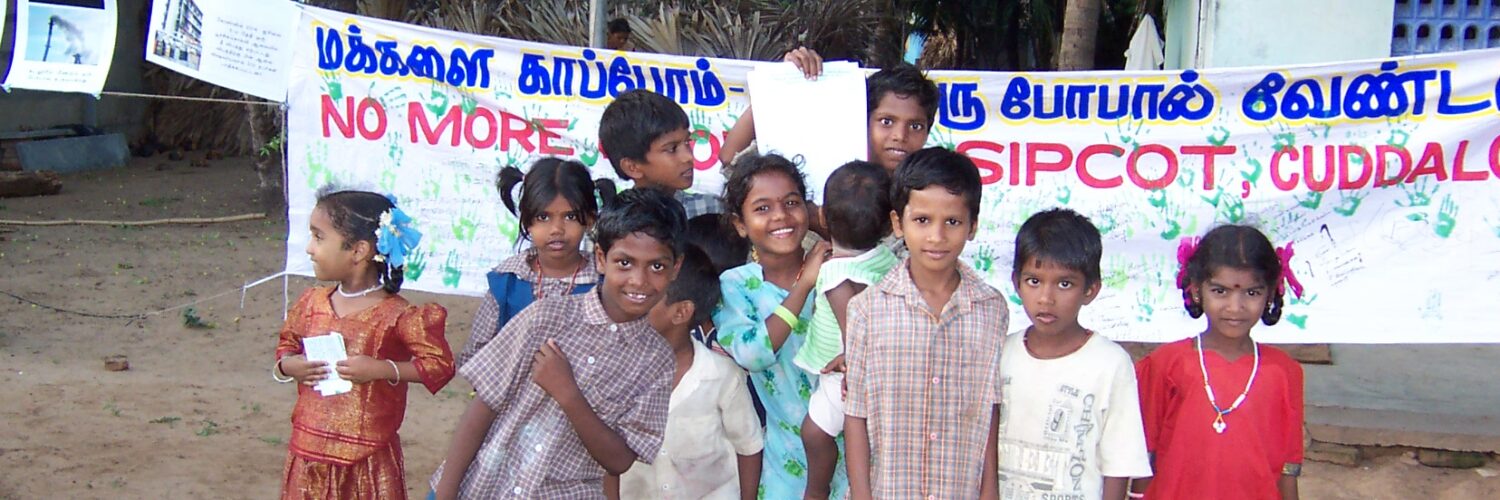12:02 PM IST 16, Nov. 2007
By Papri Sri Raman
India,
India eNews
The water of the river Cauvery – one of the major rivers of south India that is considered sacred by Hindus and is used extensively for drinking and irrigation — contains 28 toxic chemicals, a study has found.
Mettur’s environment is contaminated with dioxins, furans and 52 other toxic chemicals, says a report titled ‘Unfolding Disaster: A Study of Chemplast’s Toxic Contamination in Mettur’, released by the Chennai-based Community Environmental Monitoring (CEM).
The study of 52 chemicals traced in the area was conducted at the behest of the West Gonur Farmers Welfare Association to verify complaints by farmers of contamination of aquifers, farmlands, streams and the Cauvery by factories of Chemplast and others.
The results have led the West Gonur Farmers Welfare Association to demand that the Central Pollution Control Board (CPCB) declare Mettur a ‘critically polluted area’.
Chemplast was found to be discharging effluents containing 28 chemicals, including five carcinogens, into the river, the study revealed. At least six of them exceed safety standards, with concentrations of vinyl chloride 546 times, Bis (2-chloroethyl) ether 257 times, 1,2-dichloroethane 82 times and 1,2-dichlorobenzene 65 times the safe levels.
‘The possible combined effect of exposure to 52 chemicals points to nothing less than a public health disaster,’ said Rakhal Gaitonde, a public health expert who reviewed the report.
‘There is potential for serious, unpredictable and potentially irreversible consequences, as well as long-term damage to the environment, livelihoods, food and water security,’ he warned.
Dioxins can cause severe immune and reproductive system disorders, as well as birth defects. Mercury too causes birth defects and damages the central nervous system. Both chemicals persist in the environment and travel and magnify up the food chain to be found in milk and fish.
The farmers had sought an independent study, saying the Tamil Nadu Pollution Control Board had always maintained that the discharge from chemical factories in Mettur was safe.
The independent study, however, showed that the treated wastewater was toxic and must not be emptied into the Cauvery or the ground as it contaminates bore wells.
The study was released just two days after Tamil Nadu’s Agriculture Minister Veerapandi Arumugam released a report from Chemplast highlighting the company’s commitment to the environment.
It reported results of nine samples — including effluents from Chemplast Sanmar’s PVC factory and groundwater, soil and sediment.
The samples were analysed for organic chemicals and mercury at US-based Specialty Analytical and for dioxins/furans at Pace Analytical Services using the US Environmental Protection Agency’s protocols. The organisation said no reliable lab that could do the analyses as per US EPA protocols was found in India.
Past studies by the CPCB and the Soil Testing Laboratory have confirmed the unsuitability of well water around Chemplast for irrigation. But neither agency has analysed the water for organic chemicals.
After several earlier studies and the present CEM report, the Mettur community is now recommending a comprehensive assessment of toxicity in the region, a complete cleanup, stringent standards for effluents, better testing facilities and monitoring and a stronger public health system.
